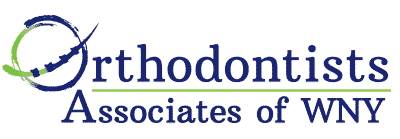Adult Orthodontics
When we’re talking about adult orthodontics, it’s a little bit different than it is when we’re talking about children, adolescents and teenagers because adults are no longer growing. When we contemplate putting the teeth in an adult’s jaws into the proper position, we often face the challenge of getting the jaws to fit together better. If the discrepancy is significant, we may have to consider surgical orthodontics. Sometimes, we have to consider a compromise solution that gets the teeth to fit together better, even though we may not get the skeleton to fit ideally. There’s a different component in adult treatment because we no longer have the ability to modify growth and development or to modify the width and length of jaws.
Benefits of Surgical Orthodontics
 Sometimes, when a patient first comes into our office, one look at them tells us they have very, very poor skeletal relationships between their jaws. Patients beyond the age when growth is still occurring often require adult orthodontics in the form of surgical intervention. Following surgical orthodontic treatment, some of the benefits a patient might experience include improvement in the aesthetic balance of the face or a more attractive profile. Oftentimes, orthognathic surgery also improves conditions within the patient’s airway.
Sometimes, when a patient first comes into our office, one look at them tells us they have very, very poor skeletal relationships between their jaws. Patients beyond the age when growth is still occurring often require adult orthodontics in the form of surgical intervention. Following surgical orthodontic treatment, some of the benefits a patient might experience include improvement in the aesthetic balance of the face or a more attractive profile. Oftentimes, orthognathic surgery also improves conditions within the patient’s airway.
Orthognathic surgery is not for every patient but, when necessary, it should be recommended. Sadly, in our profession, we are often forced to move teeth instead of making the proper recommendation. When we recognize that a case is truly a surgical one, our practice always presents it as such – and then let the patient make an informed decision as to whether they would like to do it or not. If they choose not to go forward with surgery, the option of adult orthodontics alone can be discussed, although that approach may not be recommended for some patients.
Download Our Free Orthodontic Care Guide
How Adult Orthodontics Helps with Sleep Apnea and Airway Obstructions
When evaluating a patient for orthodontic treatment, we can often identify an airway obstruction issue that contributes to their problems. Our treatments can be used to increase the width of the upper jaw and, because one’s upper jaw is connected to the nasal cavity, treating that upper jaws width problem can often decrease resistance to nasal airflow. Many times, we also consider the horizontal relationships between the upper and lower jaws because rendering treatments that bring jaws forward can help to promote a bigger airway.
When it comes to the youngest patients who come into our office, we feel as though our best approaches to their treatments are all conservative, and we try to protect the airway rather than restrict it. Adult orthodontics however, it’s much harder to make those types of corrections. If an adult patient has problems with sleep apnea, some orthodontics may help them, but additional measures may be necessary to treat their problem. Many of these patients could benefit from a surgical intervention that brings their jaws forward, further opening up their airway.
In the future, orthodontists may be asked to do these types of things more and more frequently. Sleep apnea, or airway obstructions, or breathing problems while sleeping is a rampant problem in the United States these days, and it’s become a billion dollar industry. Moving forward as a profession, orthodontists should be more concerned with making sure we’re not contributing to those problems.
If you or someone you love is interested in adult orthodontics and want to find out more about the options available, please call one of our five WNY locations to arrange a free screening. We welcome the opportunity to help you achieve a healthy and beautiful smile.
Follow us on Facebook for daily updates and oral health tips!

